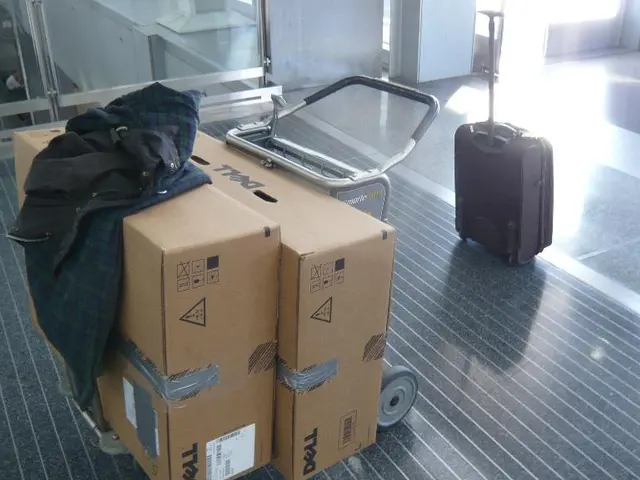A Helping Hand for Businesses Amidst Tariff Turbulence: The Power of Stress Testing
Struggling to understand tariff effects? This guide offers financial modeling strategies to estimate their influence on your finances.
Businesses are worried about the effects tariffs may have on their operations, and rightfully so. Speaking with leaders, it's clear that uncertainty is a significant concern. Without knowing the specifics of tariffs, the goods affected, and the extent of the impact, it's hard to anticipate the full consequences for their business. In such a situation, financial model stress testing becomes an indispensable asset for finance leaders to understand and respond to market uncertainty.
Embracing the Crux: What is Stress Testing and Why It Counts for Businesses and Markets
Financial model stress testing is the practice of adjusting and re-running financial models to gauge the financial repercussions of different internal or external factors, such as shutting down a plant or the loss of a key customer. In the case of tariffs, the consequences could be the loss of overseas customers or increased costs for importing goods under tariffs.
Conducting stress testing with a financial model allows business leaders to explore multiple scenarios, evaluating the impact of varying levels of tariffs and quantifying the impact on earnings, liquidity and cash flow. By harnessing this understanding, decision-makers can make informed decisions regarding the best course of action. The primary aim of stress testing is to incorporate all available information into forecasts, enabling decision-makers to implement targeted, rather than sweeping, changes to their businesses to preserve resources, capacity, and minimize damage from trade wars.
Stress testing offers an additional advantage: it aids in building support for planned changes amongst key stakeholders such as board members, investors, lenders, or employees. Backing decisions with a strong, well-reasoned rationale will lead to more success than relying solely on intuition and instincts.
To yield accurate results, consider incorporating scenario analysis within stress testing models. A minimum of three broad scenario categories should be developed:
- The Base Case: This reflects what your business operations would have been if the crisis hadn’t transpired. Ideally, it's based on a model that has already been utilized by your investors and lenders. This will help in understanding deltas in their projected returns while also offering a baseline for assessing the recovery potential.
- The Stressed Case (without mitigants): This starts with the base case but reduces revenues based on revised expectations due to the crisis at hand. It does not factor in any mitigating measures, such as layoffs or loan arrangements, to estimate the largest possible cash shortfall in the worst-case scenario. Multiple versions of this scenario can be developed based on different shutdown lengths and revenue reductions.
- The Stressed case (with mitigants): Starting from the stressed case (without mitigants), this scenario takes into account mitigating strategies like layoffs and cost-cutting measures to demonstrate what the expected cash profile looks like. Here, too, multiple versions can be created based on varying shutdown durations and revenue reductions.
Upcoming Tariffs: Market Implications and Strategies for Resilience
Tariffs can negatively impact businesses by decreasing foreign demand and increasing the cost of importing goods. Various industries, like energy, automobile manufacturing, agriculture, and food, are affected. However, businesses facing tariffs will likely encounter similar challenges, such as:
- Slumping Sales: Passing tariff costs onto customers through higher prices may result in lower sales.
- Adjusted Pricing Structures: Alter pricing if the full impact of tariffs cannot be passed onto consumers; discounting could help drive sales volume.
- Heightened costs: Be prepared for increased costs for supplies, particularly if sourced domestically, as this could put pressure on margins.
- Cash Flow Struggles: Focus on short-term forecasts to assess cash positions and secure short-term financing for potential liquidity shortfalls.
While challenges may be similar across companies, the extent of the impact and the necessary mitigating responses will differ. To conserve cash and earnings, companies can explore various courses of action, such as:
- Boosting domestic sales efforts
- Negotiating with or finding new suppliers
- Extending the length of accounts payable days to preserve cash
- Seeking out new forms of financing
- Implementing personnel layoffs
- Closing underperforming or superfluous plants, warehouses, or offices
A sophisticated, adaptable stress-testing model empowers users to incorporate both the effects detailed above and the appropriate responses into a revised forecast, allowing businesses to foresee financial performance across multiple scenarios and adjust mitigating actions as necessary to ensure cash flow.
Data and Analysis Overrule Gut Feelings
Faced with a challenging business decision, obtaining facts and analysis is always preferable to relying on intuition. Economic uncertainty can be particularly daunting for firms because uncertainty makes it difficult to quantify the impact.
Stress testing becomes an invaluable tool for businesses in situations like these, as it allows them to evaluate the effect of various economic shocks, quantify the extent of required mitigating actions, and then analyze their business for the impact of those mitigating actions. Overall, thorough stress-testing models help leaders to better comprehend their businesses and adapt to economic shocks more effectively.
- Businesses, amidst concerns over tariff impacts, find solace in the indispensable asset of financial model stress testing for understanding market uncertainty.
- Stress testing involves adjusting and re-running financial models to gauge the financial repercussions of different factors, such as tariffs, tariff-induced loss of overseas customers, or increased costs for importing goods.
- Stress testing allows businesses to explore multiple scenarios, evaluating the impact of varying levels of tariffs on earnings, liquidity, and cash flow.
- Insights from stress testing help decision-makers make informed decisions, tailor changes to their businesses, and preserve resources during trade wars.
- Stress testing also lends credibility to planned changes, boosting support among key stakeholders such as board members, investors, lenders, or employees.
- To ensure accuracy, consider incorporating scenario analysis within stress testing models, featuring three broad categories: Base Case, Stressed Case (without mitigants), and Stressed Case (with mitigants).
- Tariffs negatively impact businesses by decreasing foreign demand, increasing the cost of importing goods, and causing potential cash flow problems in industries like energy, automobile manufacturing, agriculture, and food.
- To counter these effects, businesses can explore solutions such as boosting domestic sales, negotiating with new suppliers, extending account payable days, seeking new forms of financing, implementing personnel layoffs, and closing underperforming or unnecessary facilities.
- A sophisticated, adaptable stress-testing model enables businesses to forecast their financial performance across multiple scenarios, adjust mitigating actions, and make data-driven decisions in response to economic shocks and tariff-induced challenges.




